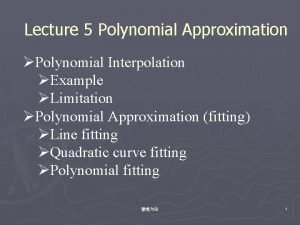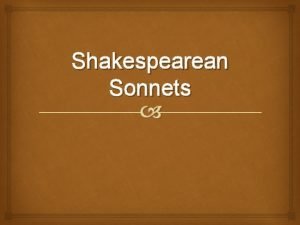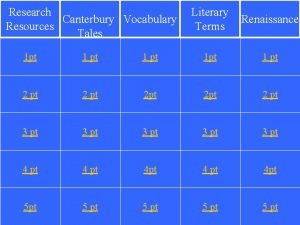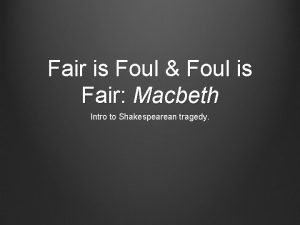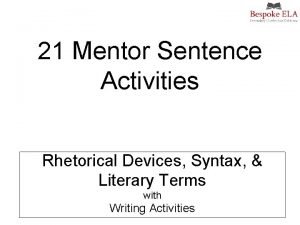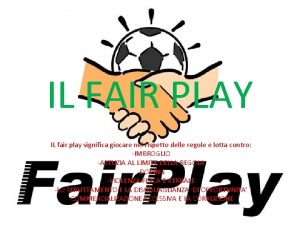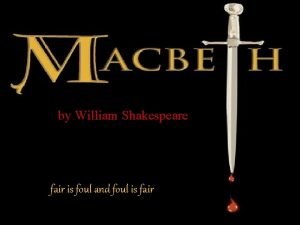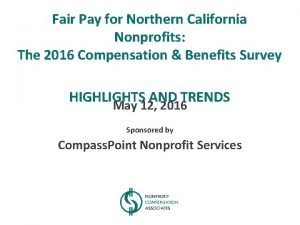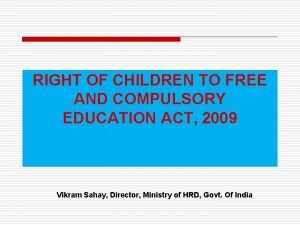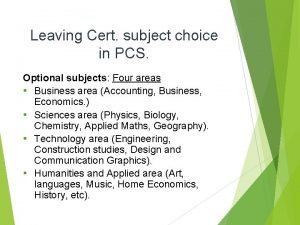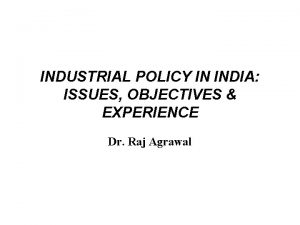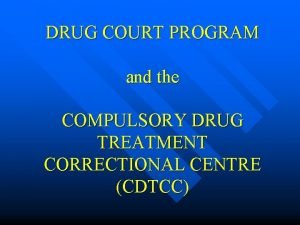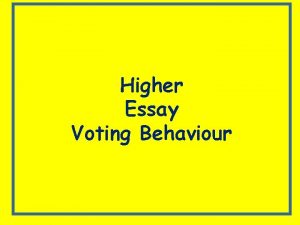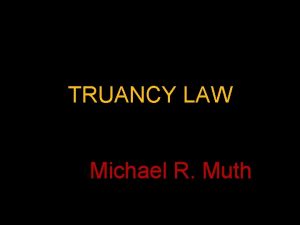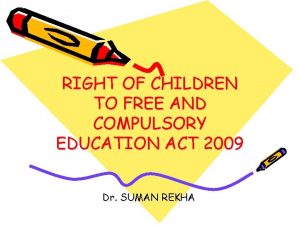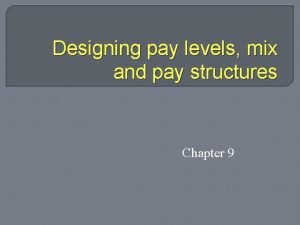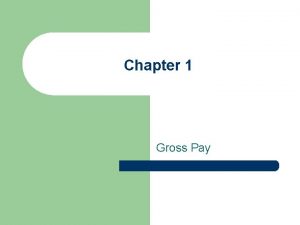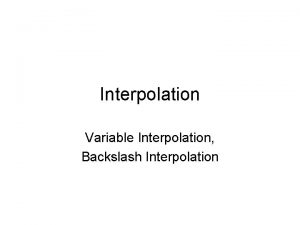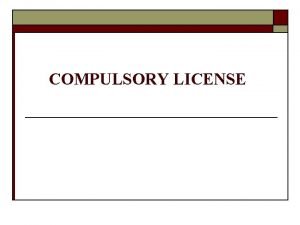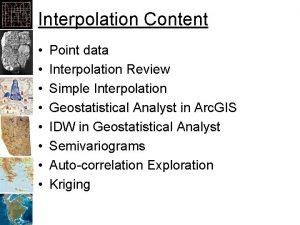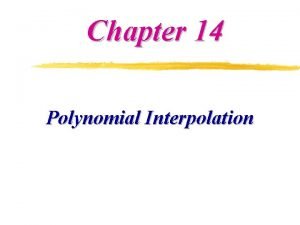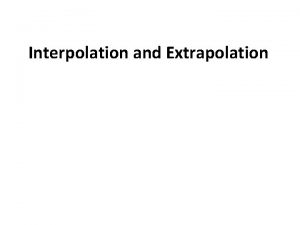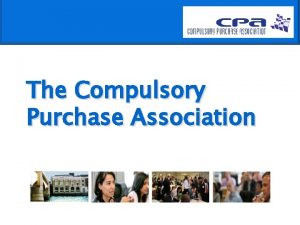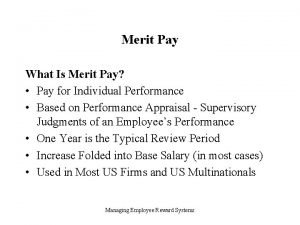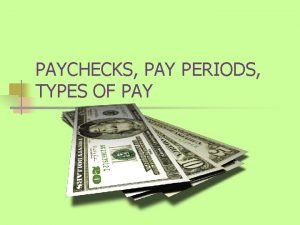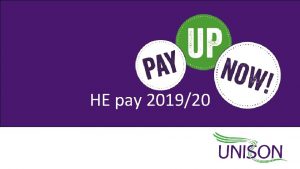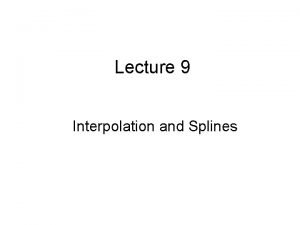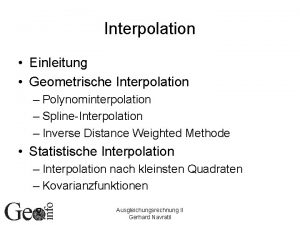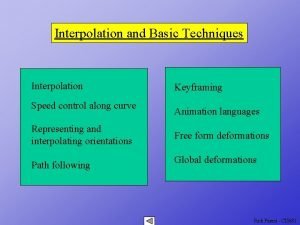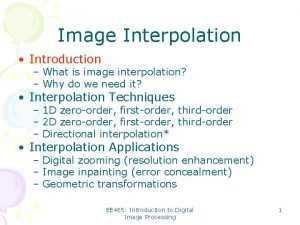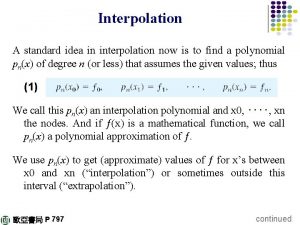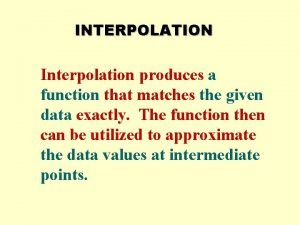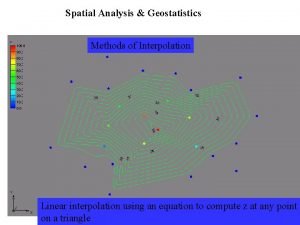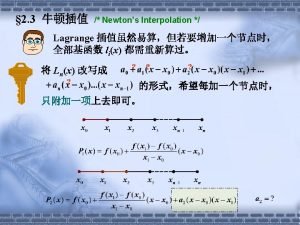Fair Use Interpolation Pay compulsory mechanical license perform























- Slides: 23

Fair Use

Interpolation Pay compulsory mechanical license, perform song, and sample performance

Grand Upright v. Warner (1991) VS

Grand Upright Cont'd • “Everybody else is doing it” • “We asked and they never responded” • Rule: In favor of O'Sullivan • “Thou shall not steal” • Sig: Unauthorized sampling is infringement; could punish under 17 USC 506 (criminal)

Bridgeport v. Dimension (2005) Sample Troll, Catalog Company "Get a license or do not sample. We do not see this as stifling creativity in any significant way. " Sig: Eliminates de minimis defense for sound recordings Bright-line test=any unlicensed sample is an infringement $4 M from Ready to Die (2006) Good Copy Bad Copy

Newton v. Diamond (2003) • 1992, “Pass the Mic” sampled James Newton's “Choir” • Beastie Boys licensed the sound recording, but not underlying composition (3 notes / 6 seconds) • Newtown sold the rights to his performance of the composition, but kept rights to composition

Fair Use Basics • A legal concept derived from common law • Codified in 1976 Copyright Act • Fair use in copyright; weaker in trademark • No fair use in patent. . . yet • Defendant must prove use to be fair • Fair use exceptions= $4. 5 B in US economy

The Fair Use Test • 17 U. S. C. 107 • Commentary, Criticism, Education/Scholarship: a balancing “test” of 4 non-exclusive factors – Purpose and character: enrichment/profit, transformation – Nature of original work: Factual/creative, published? – Amount copied/Substantiality or importance to original – Market effect or harm on original

Parody vs. Satire • Use just enough to “conjure up” the original • Parody uses copyrighted material as a direct commentary of the work – This is has a strong fair use claim • Satire is commentary on society in general using copyrighted material – This does NOT usually have a fair use claim Bush Parody

Campbell v. Acuff-Rose (1994) VS

Campbell Cont'd • Supreme Court • Ruling: in favor of 2 Live Crew, parody of “white bred original” • Sig: Commercial parody can be fair use • Paid license to Acuff (Orbinson's publisher)

Sony v. Universal (1984) VS.

Sony v. Universal cont'd • Supreme Court decision • “Betamax case” • Sig: consumers taping TV shows for later viewing (“time shifting”) not infringement • Sig: manufacturers of tapes and recorders not liable • Making these practices and technologies not liable for copyright infringement=Home Video Market • Space shifting: accessing media from different

Private Use • Non-commercial copying is allowable • Cannot display or sell copies, which dilute the original's market • Blank cassettes, VHS, writeable DVDs • 1984 Betamax

Bill Graham Archives v. Dorling Kindersley (2006) • Reproduced Billy Graham concert posters and tickets in 480 page Dead biography • Reduced size • Paired in timeline, etc. • Case brief

Fair Use? • Transformative • Purpose different than original images and doesn't “exploit” them • Posters used for historical not creative value • Transformative market • FAIR USE

Los Angeles News Service v. KCALTV Channel 9 (1997) • Case Brief • KCAL use 30 seconds of a 4 -minute copyrighted video

Fair Use? • The use was commercial • Took the “heart” of the work • Affected the copyright owner’s ability to market the video • NOT a fair use

Leibovitz v. Paramount Pictures Corp (1998) • Case Brief • Ad for Naked Gun 33 1/3

Fair Use? • Transformative • Imitated the photographer’s style for comic effect or ridicule • Artistic differences • FAIR USE

Obama/Fairey/AP/Mannie Garcia

Let’s Apply Fair Use! • Purpose/character: – For profit or political cause – Transformative? • Nature of original: – Creative or Factual? • Amount/Sub: – Qualitatively and quantitatively copied original? • Market Effect: – Will it hurt the 2006 original? Increase? ! • FAIR USE?

• “I just want Shepard Fairey to say 'alright, you're the guy. Thank you. '” ~Mannie Garcia
 Spline interpolation vs polynomial interpolation
Spline interpolation vs polynomial interpolation Sonnet has 14 lines
Sonnet has 14 lines Foul is fair and fair is foul literary device
Foul is fair and fair is foul literary device Oxymoron in macbeth
Oxymoron in macbeth Foul is fair and fair is foul
Foul is fair and fair is foul Syntax literary devices
Syntax literary devices Fair play slide
Fair play slide Examples of fair is foul and foul is fair in macbeth
Examples of fair is foul and foul is fair in macbeth Fair pay for northern california nonprofits
Fair pay for northern california nonprofits Four compulsory subjects
Four compulsory subjects Child centred curriculum
Child centred curriculum Pcs compulsory subjects
Pcs compulsory subjects Industries requiring compulsory licensing *
Industries requiring compulsory licensing * Dua qunut hanafi
Dua qunut hanafi Fajr rakat
Fajr rakat Compulsory drug treatment correctional centre
Compulsory drug treatment correctional centre Higher modern studies voting behaviour essay
Higher modern studies voting behaviour essay Violation of compulsory attendance req parent, etc
Violation of compulsory attendance req parent, etc Salient features of rte
Salient features of rte How much does wanda earn per hour?
How much does wanda earn per hour? Pay level and pay mix
Pay level and pay mix Short term incentive
Short term incentive Chapter 1 gross income answers
Chapter 1 gross income answers Actual mechanical advantage vs ideal mechanical advantage
Actual mechanical advantage vs ideal mechanical advantage
